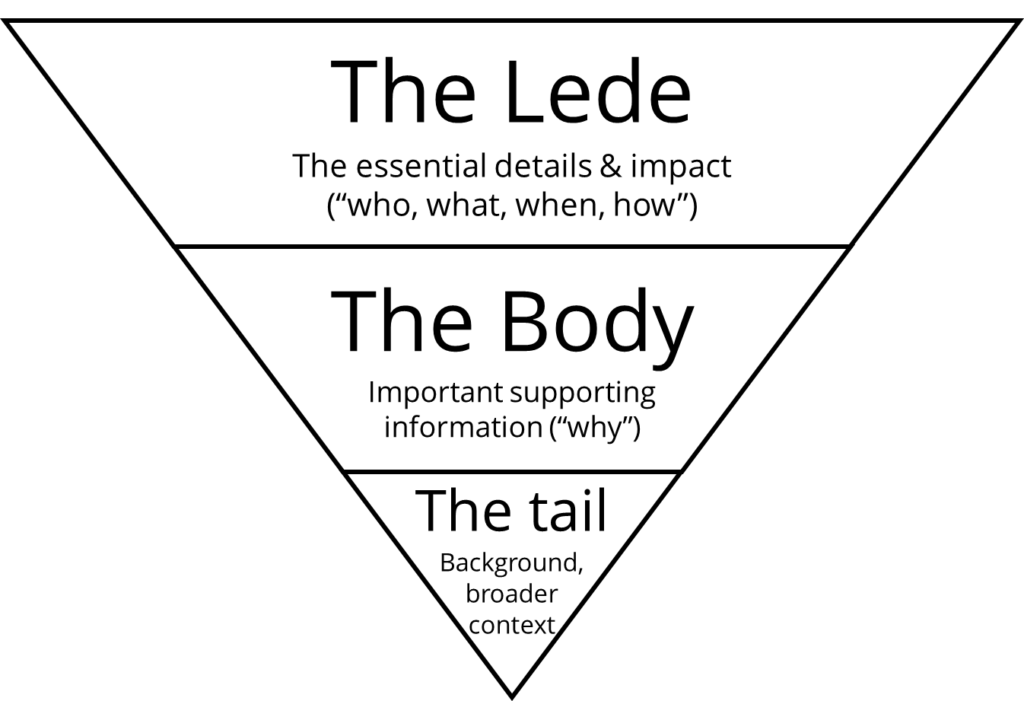You arrive, slightly frazzled, a few minutes after the agreed time for lunch. At the door, you thrust the obligatory bottle of wine into your mother-in-law’s hand and say that you’re sorry you’re late; the traffic was terrible. “Which way did you come?” pipes up your father-in-law from the hallway, and you immediately realise that you have made a grave error. You know that whichever way you have come, he will explain to you at length why you should have chosen a different route, going into excruciating detail about why you should avoid the bypass on Saturday afternoons when the rugby is on and how to get into the right lane for each roundabout.
As you stand, dazed, nodding along while nursing a room-temperature glass of Pinot Grigio, you find yourself gripped by a strong sense of déjà vu. Didn’t you have to endure a conversation just like this when you presented the monthly numbers to the CMO earlier in the week? Their lengthy exposition on why your campaign attribution methodologies were all wrong ate up the first 20 minutes of a half-hour meeting, leaving you precious time to actually present your findings. Much like your father-in-law (who never uses the bypass on a Saturday anyway), the CMO knows next to nothing about campaign attribution. So why did you let them waste so much time indulging their opinions?
There are various reasons that senior stakeholders suck all the air out of the room with their own opinions. Some just like to hear the sound of their own voice, while others are trying to cover up the fact that they don’t really understand the big picture by focusing on insignificant details. But many leaders are just so habituated in the expectation that they should have an opinion about everything that they just can’t help themselves. Unfortunately, the modern culture of organisational leadership perpetuates and exacerbates this problem: it is generally agreed that decisiveness is a valuable leadership trait, and so decisive people (and especially decisive men) are seen as leaders; as they rise through the ranks, they unconsciously train themselves to be able to make decisions with less and less information. This creates the counterintuitive outcome that very decisive people are at their most opinionated when they have the least information, and actually become less certain in their opinions the more they know.
Sadly, what you might think is the most logical response to encountering people like this – to drill down into the details to prove your methodology is sound – does not work. No one (and especially not Deciders) likes to become less certain about things, so if you bombard a Decider with information, they will shut you down with a cry of “BORING!” (or perhaps a more work-appropriate phrase like “I don’t have time to get into the weeds with you on this”).
That doesn’t mean, however, that you just have to grit your teeth and nod along in the name of a harmonious Sunday lunch (or marketing review). But it does mean you have to adjust your information delivery strategy. Fortunately, there is a large group of individuals who have decades of experience delivering information to an opinionated group of people who have a short attention span: journalists.
Enter the Inverted Pyramid
The inverted pyramid is said to have been invented in the nineteenth century around the time of the US Civil War, when journalists telegraphed their stories (such as the assassination of Lincoln) to their newsrooms, and, worried about the reliability of the communication, learned to put the most important information first.

The success of the inverted pyramid approach can be seen on every newspaper front page in the world: An eye-catching headline which summarises the story in just a few words, followed by a paragraph that expands on the story and provides important details, followed by further information and context for the story. Applied to delivering analytic insights, the means the following:
- Start with the answer as a headline. If you have been researching the reasons why people are cancelling their subscription, and you believe that the primary reason is that renewal costs are too high (and can substantiate this), then your first slide should just say “High renewal costs main cause of subscription churn”. Even better, have your key recommendation as the headline: “Better communication about subscription benefits would reduce subscriber churn”. If you can’t write a snappy headline like this on the back of your analysis, then your analysis is too inconclusive and you shouldn’t be wasting the stakeholders’ time with it.
- Provide a “first paragraph” of the key details of your analysis – quantify the headline and briefly describe how you came to have this information. For example: “In a survey of 1,000 of our non-renewing customers, 34% cited high renewal costs as the primary reason they didn’t renew. Of this group, 76% were unaware of one or more of our product capabilities.”
- Wait. You won’t have to wait long. The Decider in the room will do one of two things: They will either ask what to do next (which is why you need to have a recommendation to hand), or they will ask for more information, probably because they hope you’re wrong (because they don’t like what you’ve told them).
- Move down the pyramid. In response to questions, you can start sharing more of the methodology you used to arrive at the conclusions. But don’t make the mistake of immediately jumping into the weeds: this will spook the Decider and cause them to start pushing back. Reveal further information in a staged way that provides enough new context to answer the question without overwhelming them.
- If you do get into a back-and-forth about your methodologies, the best way out of that thicket is to be able to offer up a concrete way to test your recommendation – for example, offering a subset of users a reduction on renewal costs, and seeing if these users renew at a better rate than everyone else.
- STOP. At some point your stakeholder is going to have their fill of additional information – either because they have satisfied their curiosity/scepticism, or because they have become bored with the detail. At this point they may pause and think for a minute. Do not say anything. You do not want to artificially extend the conversation past the point where it flips from the stakeholder asking for more detail to them asking what to do next.
- Above all, resist the urge to demonstrate how smart you are. Every additional piece of information you give runs the risk of providing the stakeholder with an opportunity to find fault with the work (and thus opt out of making a decision). A good journalist understands that 90% of readers will not reach the bottom of the pyramid, and that is absolutely fine.
It will never be possible to wrangle an opinionated stakeholder perfectly – some people just like to air their thought-processes out loud, just like your father-in-law and his opinions about the A316 – but by not allowing yourself to be pulled into the weeds you stand the best chance of shepherding these folks through to the outcome you want, which is to implement your recommendations.

OK. But what should I have said to my father-in-law re traffic?
Oh I don’t think there’s anything you can say. Just keep drinking the wine until he runs out of steam.
So good.